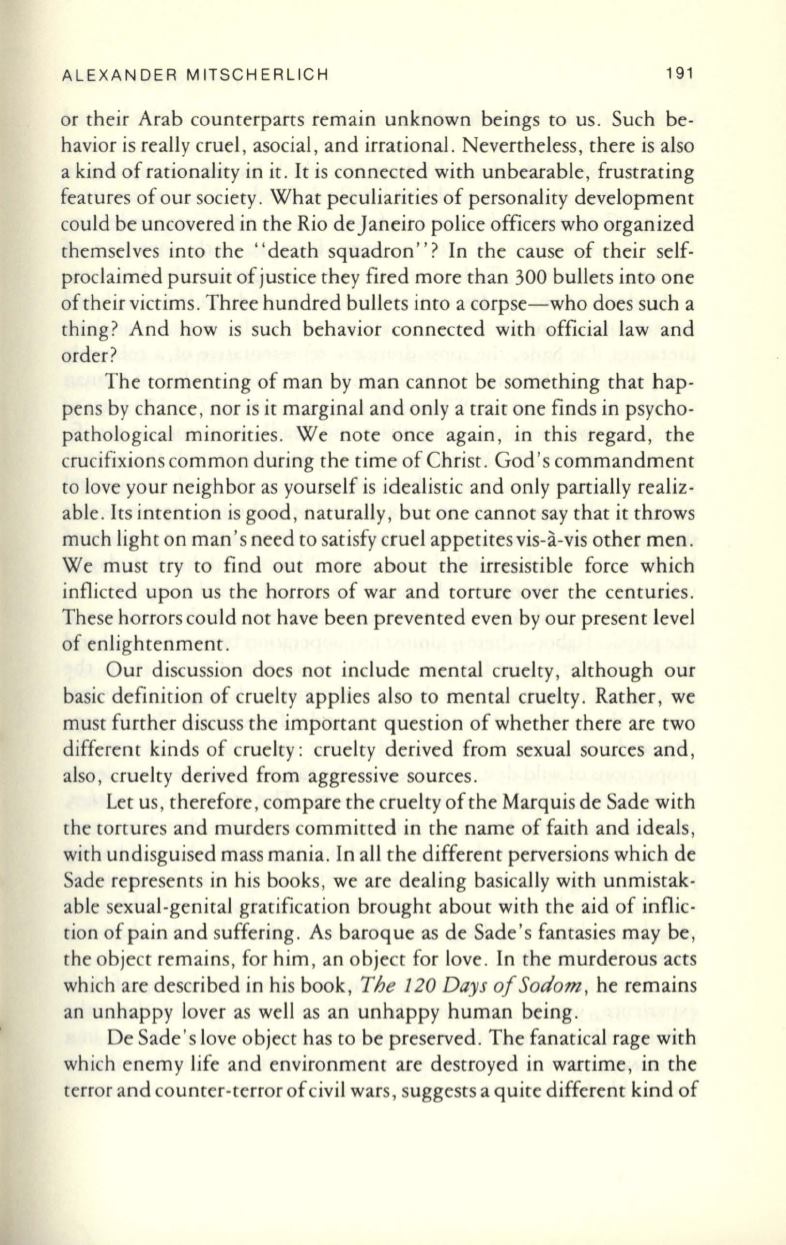
ALEXAN DER MITSCH ERLICH
191
or their Arab counterparts remain unknown beings to us. Such be–
havior is really cruel, asocial, and irrational. Nevertheless, there is also
a kind of rationality in it. It is connected with unbearable, frustrating
features of our society. What peculiarities of personality development
could be uncovered in the Rio de Janeiro police officers who organized
themselves into the "death squadron"? In the cause of their self–
proclaimed pursuit of justice they fired more than 300 bullets into one
of their victims. Three hundred bullets into a corpse-who does such a
thing? And how is such behavior connected with official law and
order?
The tormenting of man by man cannot be something that hap–
pens by chance , nor is it marginal and only a trait one finds in psycho–
pathological minorities . We note once again , in this regard, the
crucifixions common during the time of Christ . God's commandment
to love your neighbor as yourself is idealistic and only partially realiz–
able. Its intention is good, naturally, but one cannot say that it throws
much light on man 's need to satisfy cruel appetites vis-a-vis other men.
We must try to find out more about the irresistible force which
inflicted upon us the horrors of war and torture over the centuries.
These horrors could not have been prevented even by our present level
of enlightenment .
Our discussion does not include mental cruelty, although our
basic definition of cruelty applies also to mental cruelty. Rather, we
must further discuss the important question of whether there are two
different kinds of cruelty: cruelty derived from sexual sources and,
also , cruelty derived from aggressive sources.
Let us , therefore, compare the cruelty of the Marquis de Sade with
the tortures and murders committed in the name of faith and ideals,
with undisguised mass mania. In all the different perversions which de
Sade represents in his books, we are dealing basically with unmistak–
able sexual-genital gratification brought about with the aid of inflic–
tion of pain and suffering . As baroque as de Sade's fantasies may be,
the object remains, for him, an object for love . In the murderous acts
which are described in his book,
The
120
Days ofSodom,
he remains
an unhappy lover as well as an unhappy human being.
De Sade' s love object has to be preserved. The fanatical rage with
which enemy life and environment are destroyed in wartime, in the
terror and counter-terror ofcivil wars, suggests a quite different kind of


